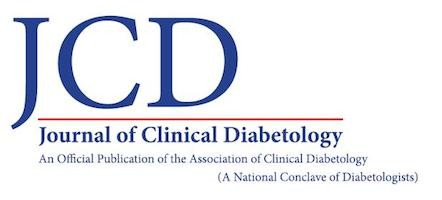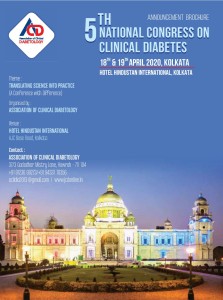Alarming Frequency of Gestational Diabetes Mellitus (GDM) Attending a Tertiary Care Hospital in Bangladesh
Nusrat-Sultana, Hasanat MA, Sharmin-Jahan, Mashfiqul-Hasan, Sandesh-Panthi, Yasmin-Aktar, Fariduddin M
Screening for gestational diabetes mellitus (GDM) in pregnancy is important as it is associated with adverse fetal and maternal outcomes and because these women and their children are at risk of developing diabetes mellitus (DM) in future. A number of clinical risk factors have been demonstrated to be associated with increased likelihood of GDM, including age, ethnicity, obesity, family history of diabetes and past obstetric history.
Mechanism of Action of Oral Antidiabetic Drugs
Dr. Nirmalya Roy , Kingshuk Bhattacharjee
A 45 year old woman, a known type 2 diabetes mellitus (T2DM) case for last 10years. Her BMI is 32 kg/m2. She is currently on metformin 1 gram twice daily (bid). She loves to eat, scared of needle. Her glycaemic profile is HbA1c 8%, fasting plasma glucose (FPG) - 160 mg/dL and post prandial plasma glucose (PPPG) - 210 mg/dL. Preferred DPP4i over SGLT2i because she suffered from repeated episodes of urinary tract infection.
Insulin Therapy in Diabetic Pregnancy: Clinician’s Vision
Dr. Sunil Gupta
Insulin therapy is the most preferred therapy to achieve optimal glycemic control during pregnancy complicated by any form of diabetes. Inadequate glycemic control is directly or indirectly related to various fetal/neonatal complications like congenital malformations, macrosomia, premature birth, birth trauma, neonatal hypoglycemia and hyperbilirubinaemia.
Glucagon Like Peptide 1 Receptor Agonists: Glycaemic Control and Beyond
Dr. Urman A Dhruv, Dr. Om Prakash Gupta
The prevalence and incidence of diabetes in India is increasing drastically since the first epidemiological study carried out in 1977.1 T2DM is a progressive
disease warranting intensification of treatment, as beta- cell function declines over time. Current treatment algorithms recommend metformin as the first-line agent, while advocating the addition of either basal-bolus or premixed insulin as the final level of intervention. The cardiovascular morbidity and mortality associated with diabetes are well established, so much so that T2DM has been described as a cardiovascular disease presenting as a metabolic disorder. Patients with T2DM are particularly at risk for atherosclerosis; consequently glycaemic therapies with ancillary vascular benefits are particularly useful, and the pleiotropic effects of glucose-lowering medications are of interest with regards to their effects on markers of cardiovascular health.
Anemia in Diabetic Kidney Disease
Dr. Manisha Sahay, Dr. Rakesh Sahay
Diabetic kidney disease is an important cause of kidney disease in our country.1 CKD is defined as impairment of kidney function of greater than or equal to 3 months duration characterized by either (i) fall of Glomerular filtration rate (GFR) less than 60 ml/min or (ii) if GFR is more than 60ml/min there should be other markers of kidney damage such as presence of proteinuria, hematuria, shrunken kidneys or fibrosis on biopsy.
Journal Watch
Quiz
Announcement




